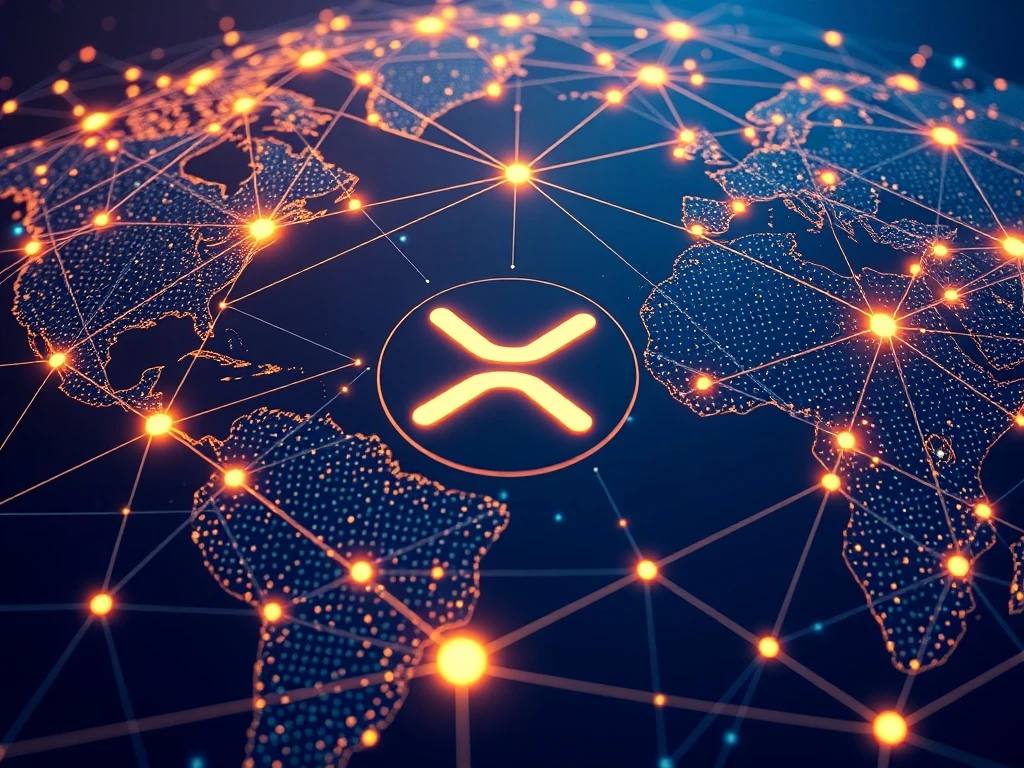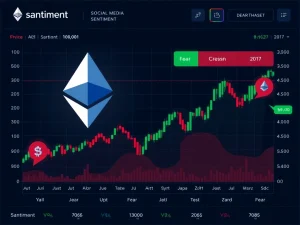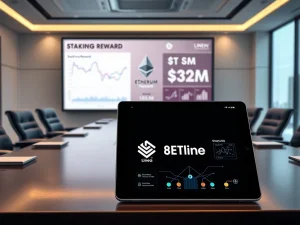XRP: Revolutionizing Global Infrastructure with Ripple’s Breakthrough Patent

Are you ready for a seismic shift in how money moves across the globe? For anyone tracking the cryptocurrency space, especially those invested in XRP, the latest revelations surrounding a pivotal Ripple patent are nothing short of monumental. This isn’t just about another technical document; it’s about a foundational blueprint that positions XRP at the very heart of an instant, scalable, and truly global financial infrastructure. Let’s dive deep into what this means for the future of finance and why this patent could be a game-changer.
XRP: The Core of Future Global Infrastructure
Imagine a world where cross-border transactions happen in seconds, not days, and at a fraction of the cost. This vision, long championed by Ripple, is now backed by a detailed technical framework revealed through crypto researcher Stern Drew’s analysis of Ripple’s patent EP3054405A1. This patent isn’t just a theoretical concept; it introduces a system designed to make global infrastructure faster, more efficient, and incredibly robust. At its core are “Temporary Consensus Subnetworks,” an innovative approach to how consensus is achieved on the XRP Ledger (XRPL).
- Redefining Consensus: Unlike traditional blockchain methods that demand full validator consensus for every transaction, this patent proposes a dynamic system.
- Speed and Efficiency: Transactions can be validated by a smaller, temporary group of trusted validators chosen by the sender and receiver. This dramatically accelerates transaction finality to near-instantaneous speeds.
- Transparency Maintained: Despite the localized validation, transparency is upheld through broader network record-keeping, ensuring integrity without sacrificing speed.
Stern Drew emphasizes that this mechanism directly tackles the persistent challenges of scalability and latency inherent in current blockchain systems. By enabling customizable validator sets per transaction, Ripple’s design allows for tailored security and speed adjustments, making it incredibly versatile for diverse financial operations.
Understanding Ripple’s Patent: A Game Changer for Blockchain Scalability
The innovation embedded within the Ripple patent EP3054405A1 is particularly significant for blockchain scalability. The ability to customize validator sets based on the nature of a transaction is a breakthrough. Think about it:
- For smaller, everyday transactions: Fewer validators can be involved, allowing for rapid, almost instantaneous processing. This is ideal for retail payments or micro-transactions.
- For larger, high-value, or riskier transactions: Additional validators can be brought into the consensus process, strengthening security and trust without necessarily reverting to the slow pace of legacy systems.
This flexibility is crucial for institutional-scale operations, where both trust and efficiency are paramount. The patent offers a nuanced approach to decentralization, allowing for adaptability without sacrificing the core principles of a distributed ledger. This contrasts sharply with traditional financial messaging systems like SWIFT, which are notorious for their reliance on multiple intermediaries, leading to high costs and settlement times that can stretch for days. Ripple’s model fundamentally eliminates these intermediaries, reducing both costs and settlement times to mere seconds.
Transforming Cross-Border Payments with XRP’s Innovative Approach
The implications of this patent for cross-border payments are profound. Stern Drew argues that this system firmly positions XRP as a neutral bridge asset, facilitating seamless value transfer between different currencies or tokenized assets. This capability is not just about faster payments; it’s about creating a truly frictionless global economy. Consider these benefits:
- Cost Reduction: By cutting out intermediaries, the fees associated with international transfers can be drastically reduced.
- Speed and Efficiency: Transactions settle in seconds, enabling real-time liquidity and cash flow for businesses and individuals alike.
- Accessibility: It opens up possibilities for underserved markets, making global finance more inclusive.
This capability is especially valuable in emerging use cases such as Central Bank Digital Currencies (CBDCs) and tokenized real-world assets. In these scenarios, where speed, reliability, and regulatory compliance are paramount, Ripple’s architecture offers a compelling framework. XRP’s role as a bridge asset ensures that value can move efficiently between disparate digital and traditional financial systems, acting as the universal translator of money.
Institutional Adoption: How Ripple’s Vision Shapes Global Infrastructure
The patent explicitly underscores Ripple’s strategic focus on institutional adoption. By embedding XRP at the settlement layer of a blockchain-based financial system, the company is directly targeting institutions and governments. These entities are actively seeking scalable, real-time solutions for their complex global infrastructure needs, particularly in cross-border transactions. The system’s decentralized yet adaptable architecture aligns perfectly with institutional demands for both robust security and customizable features. This isn’t about replacing banks, but rather providing them with the underlying technology to modernize their operations and compete in a rapidly evolving digital landscape.
The ability to tailor validator sets per transaction allows financial institutions to balance decentralization with their specific regulatory and security requirements. This flexibility is a key differentiator, making the XRP Ledger an attractive option for entities exploring tokenization and digital asset strategies. Ripple isn’t just exploring theoretical concepts; they are actively building the foundational infrastructure for a blockchain-driven financial future.
Beyond Speculation: The Real-World Impact of Ripple’s Patent
Stern Drew’s analysis highlights that the Ripple patent represents a foundational step in integrating XRP into global liquidity networks, moving it firmly beyond speculative utility to concrete, institutional-grade applications. This aligns perfectly with Ripple’s long-term vision of displacing traditional payment rails with a decentralized, XRP-powered alternative.
The implications extend far beyond XRP’s role as a mere speculative asset. By enabling per-transaction customization of validator sets, Ripple’s system caters to diverse institutional needs, from high-speed retail transactions to high-security interbank settlements. This adaptability could attract central banks and financial entities exploring tokenization, offering a framework to balance decentralization with regulatory compliance. The patent’s technical advancements reinforce XRP’s potential to redefine global liquidity infrastructure. By prioritizing speed, security, and institutional scalability, Ripple’s innovation challenges existing financial systems to adopt blockchain-centric solutions. As regulatory and market dynamics evolve, the XRP Ledger’s architecture may emerge as a critical component in the transition toward real-time, decentralized financial ecosystems.
Frequently Asked Questions (FAQs)
What is Ripple’s patent EP3054405A1?
This patent describes a technical framework for “Temporary Consensus Subnetworks” on the XRP Ledger. It allows for transactions to be validated by smaller, temporary groups of trusted validators, significantly accelerating transaction speeds while maintaining network transparency.
How does this patent improve blockchain scalability?
The patent enhances blockchain scalability by enabling customizable validator sets per transaction. This means smaller transactions can be processed rapidly by fewer validators, while larger or riskier transactions can involve more validators for increased security, addressing latency and throughput challenges.
What is XRP’s role in this new infrastructure?
XRP is positioned as a neutral bridge asset, facilitating seamless and instant value transfer between different currencies or tokenized assets. It eliminates intermediaries, reducing costs and settlement times for cross-border payments.
How does Ripple’s system compare to traditional systems like SWIFT?
Unlike SWIFT, which relies on intermediaries and can take days for cross-border payments, Ripple’s model eliminates these intermediaries, reducing costs and settling transactions in seconds. It offers a direct, real-time alternative for global value transfer.
What are the implications for institutional adoption and CBDCs?
The patent underscores Ripple’s focus on institutional adoption by providing a scalable, real-time solution for cross-border transactions. Its flexibility and decentralized architecture make it highly relevant for central banks exploring CBDCs and institutions looking into tokenized real-world assets, balancing security with customization.
Does this patent mean XRP is no longer a speculative asset?
While XRP’s price can still be subject to market speculation, the patent highlights Ripple’s strategic move to embed XRP into foundational financial infrastructure. This shifts its utility towards concrete, institutional-grade applications, moving beyond mere speculation to a core component of global liquidity networks.








